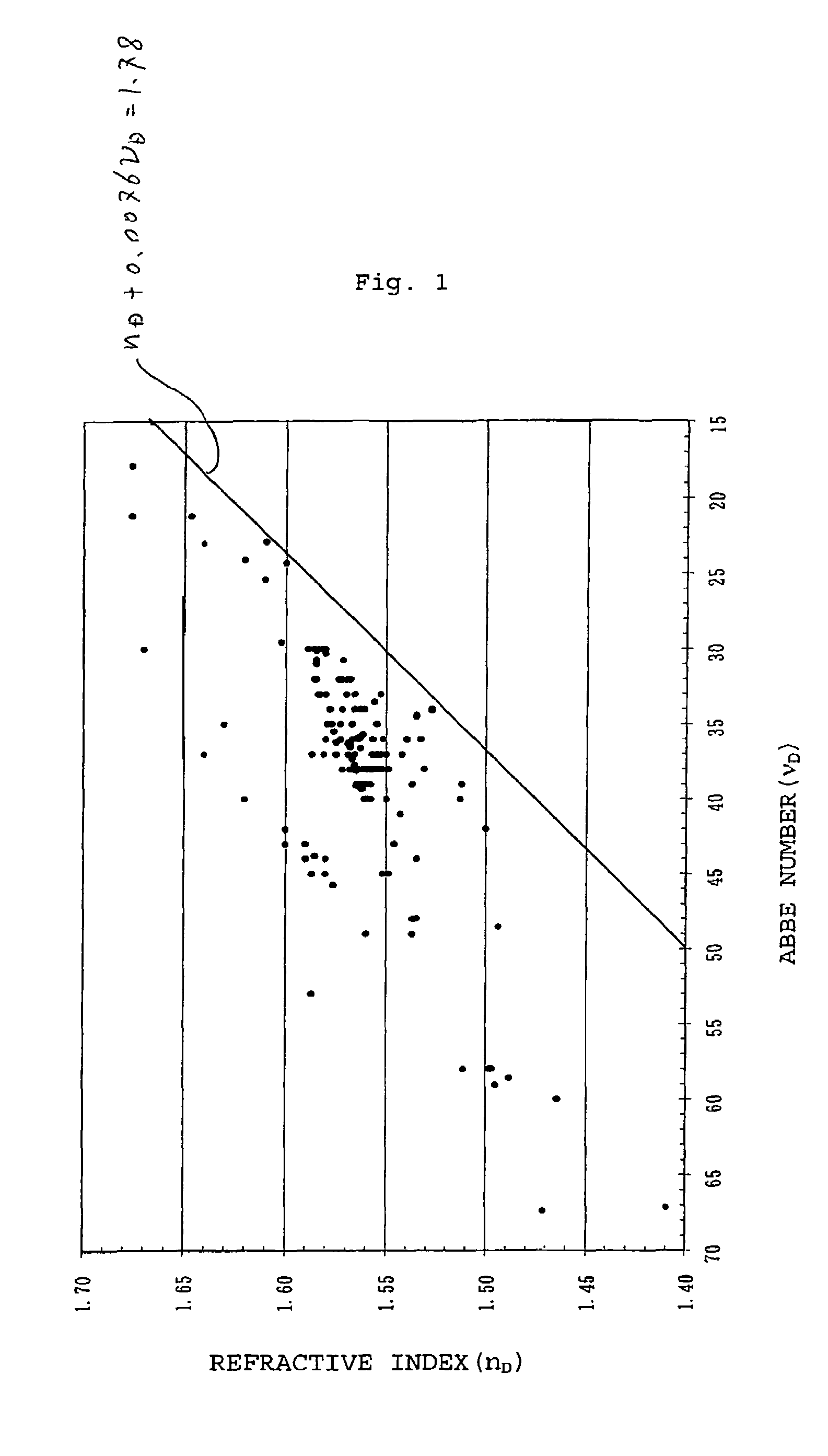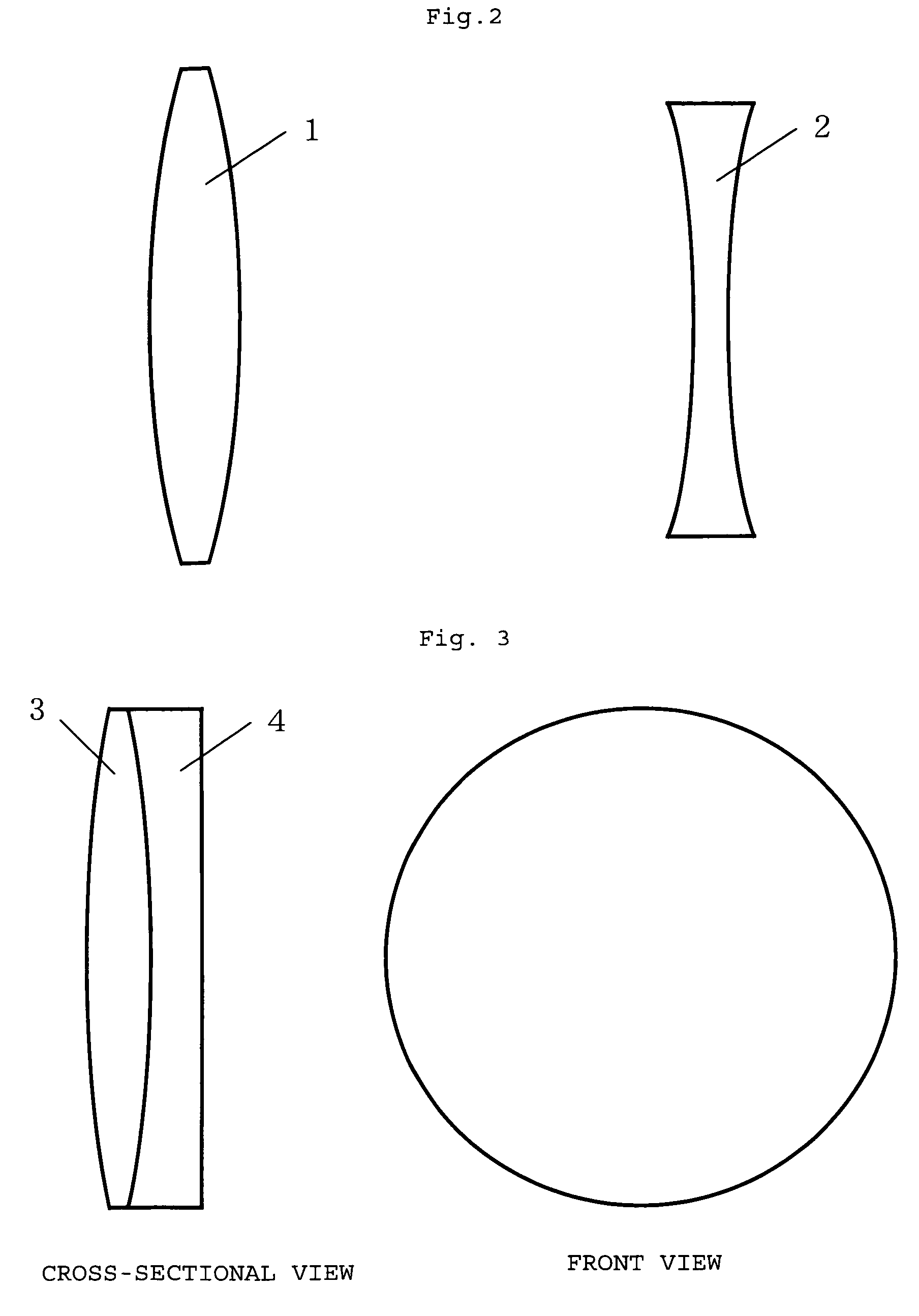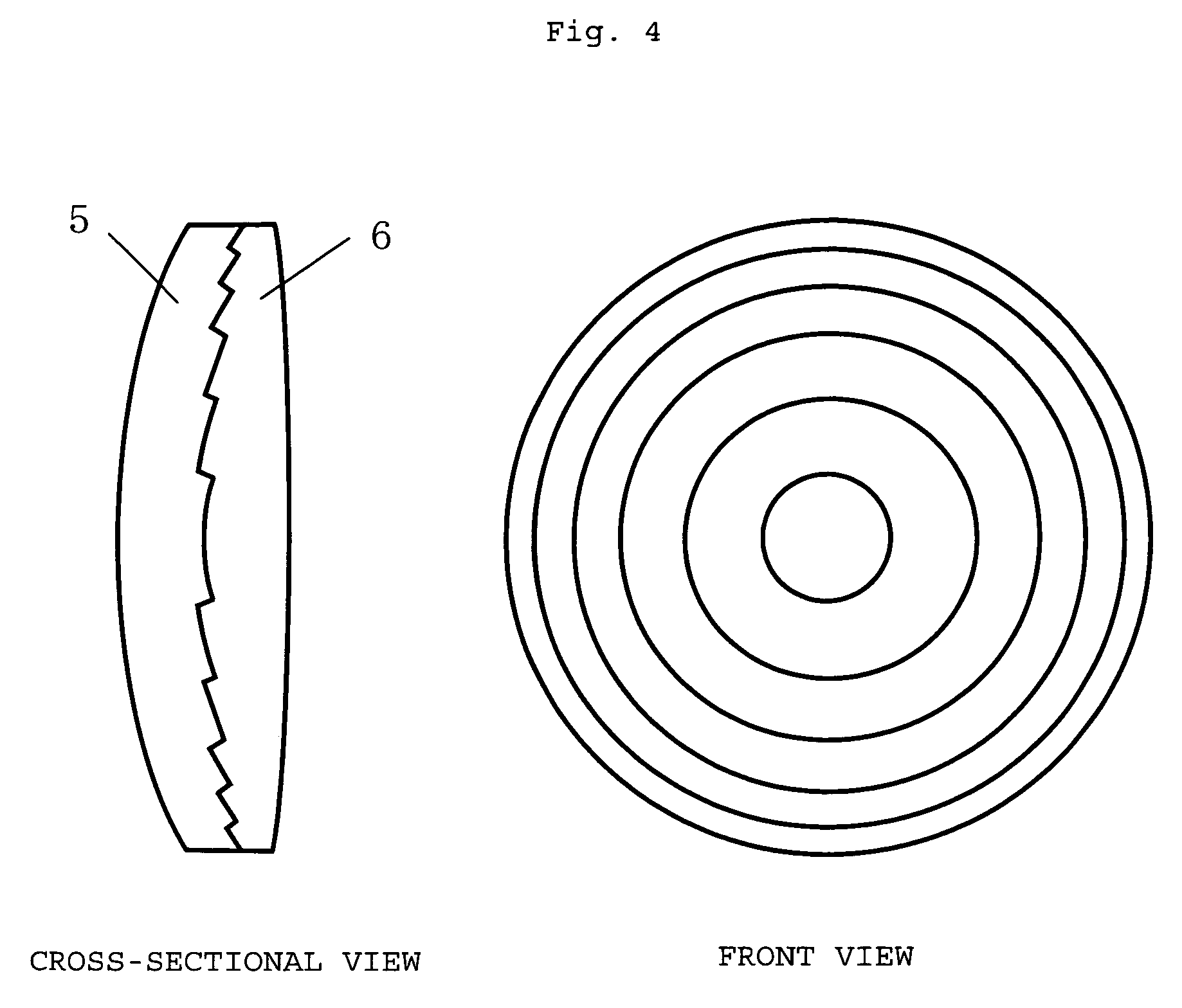Optical element and achromatic lens
a technology of optical elements and chromatic aberration, applied in the field of optical elements and chromatic lenses, can solve the problems of not reaching a satisfactory level of focal length after correction of chromatic aberration, not yet known what material is being used, and may miss the right moment to release the shutter
- Summary
- Abstract
- Description
- Claims
- Application Information
AI Technical Summary
Benefits of technology
Problems solved by technology
Method used
Image
Examples
preparation example 1
[0143]Glycerin and stearic acid of Wako Pure Chemical Industries, Ltd. which were special grade chemicals were reacted with each other in the usual manner, using sodium hydroxide as a catalyst, to obtain glycerin monostearate. The sodium content of the prepared glycerin monostearate was 9.8 ppm.
preparation example 2
[0144]The glycerin monostearate prepared in the above Preparation Example 1 was fully rinsed with water to prepare glycerin monostearate having a sodium content of 0.2 ppm.
Example 1
Synthesis of Polymer
[0145]To a reactor equipped with a thermometer, agitator and reflux condenser, 460.1 parts by weight of ion exchange water and 79.0 parts by weight of 48-wt % sodium hydroxide aqueous solution were added. Then, 82.1 parts by weight (76.5 mol % of all dihydroxy compounds) of 2,2-bis(4-hydroxyphenyl)-1,1,1,3,3,3-hexafluoropropane having a Hazen unit color number of 30, 19.2 parts by weight (23.5 mol % of all dihydroxy compounds) of 2,2-bis(4-hydroxy-3-methylphenyl)propane having a Hazen unit color number of 20, and 0.20 part by weight of hydrosulfite were added and dissolved therein. Then, after 271.3 parts by weight of methylene chloride was added, 41.1 parts by weight of phosgene was blown into the mixture under agitation at 15 to 20° C. over 60 minutes. After phosgene was blown into t...
example 1
Calculation Example 1
[0172]To examine the effect of the optical element of the present invention, focal lengths of an F line (wavelength: 486.13 nm) and a C line (wavelength: 656.27 nm) were calculated under the following conditions.
[0173]A laminated lens prepared by laminating a convex lens (diameter: 60 mm, curvature radius of curved surface of light entering surface: +120 mm, curvature radius of curved surface of light exiting surface: −80 mm, maximum thickness at the center of the lens: 20 mm) made of polymethyl methacrylate resin (νD=57, nD=1.491, nF=1.496, nC=1.488) with a concave lens (diameter: 60 mm, curvature radius of curved surface of light entering surface: −80 mm, curvature radius of curved surface of light exiting surface: −550 mm, minimum thickness at the center of the lens: 5 mm) made of the polymer 9 prepared in the above Example 9 was assumed, and focal lengths of the F line and C line were calculated with the convex lens side being a light entering side. For calc...
PUM
| Property | Measurement | Unit |
|---|---|---|
| Abbe number vD | aaaaa | aaaaa |
| refractive index nD | aaaaa | aaaaa |
| weight ratio | aaaaa | aaaaa |
Abstract
Description
Claims
Application Information
 Login to View More
Login to View More - R&D
- Intellectual Property
- Life Sciences
- Materials
- Tech Scout
- Unparalleled Data Quality
- Higher Quality Content
- 60% Fewer Hallucinations
Browse by: Latest US Patents, China's latest patents, Technical Efficacy Thesaurus, Application Domain, Technology Topic, Popular Technical Reports.
© 2025 PatSnap. All rights reserved.Legal|Privacy policy|Modern Slavery Act Transparency Statement|Sitemap|About US| Contact US: help@patsnap.com



